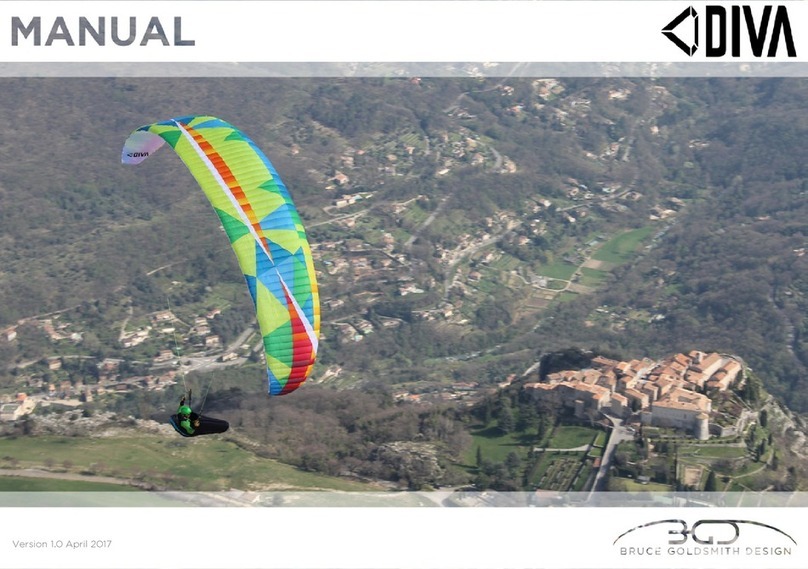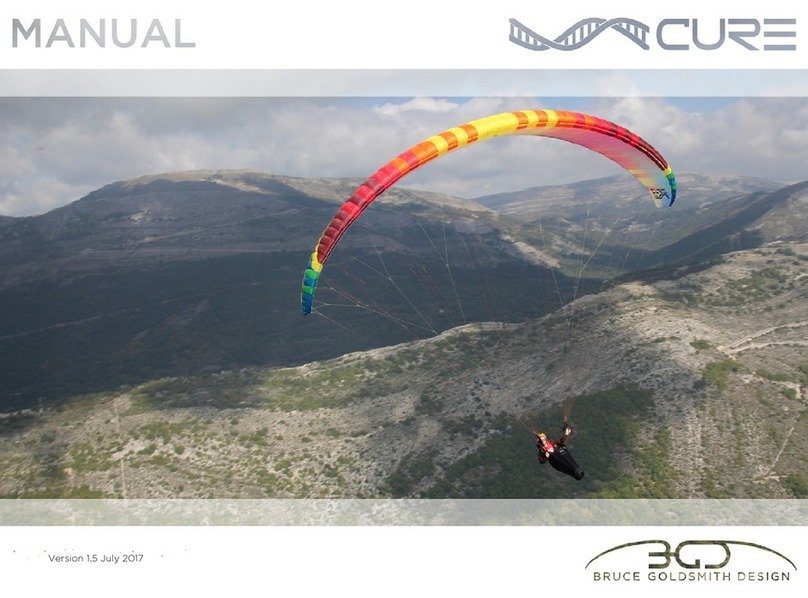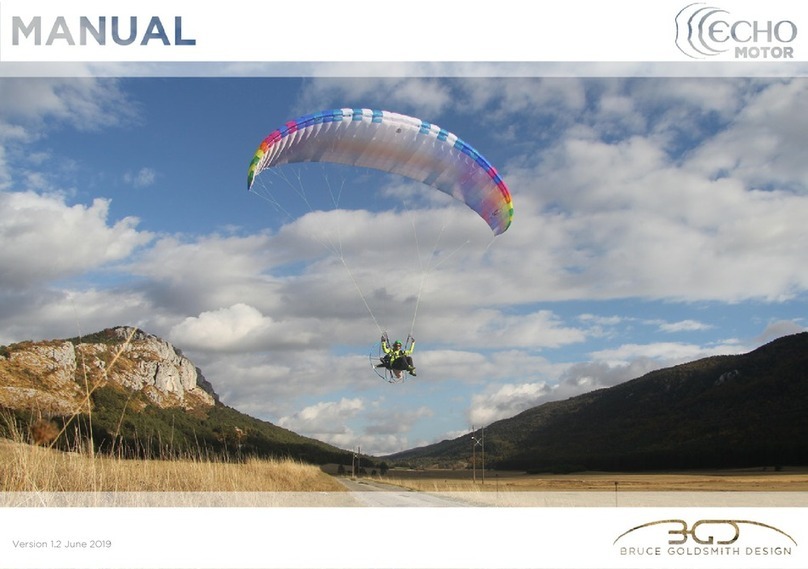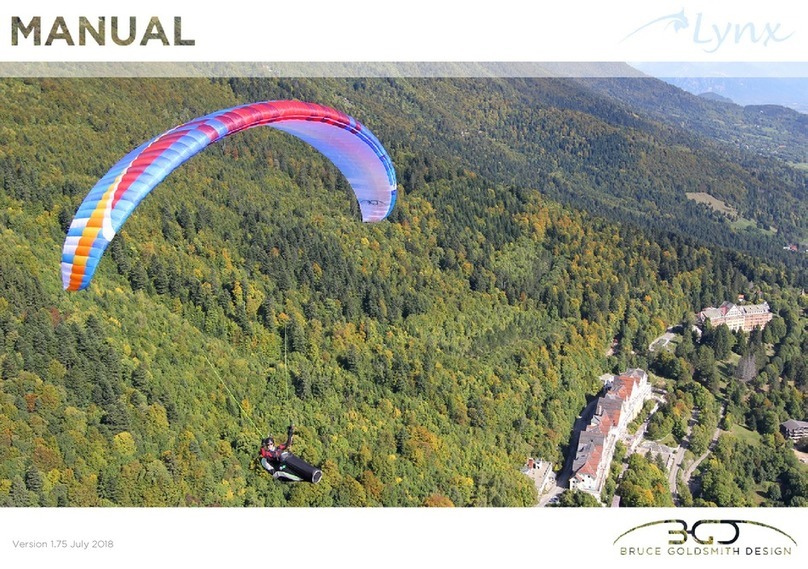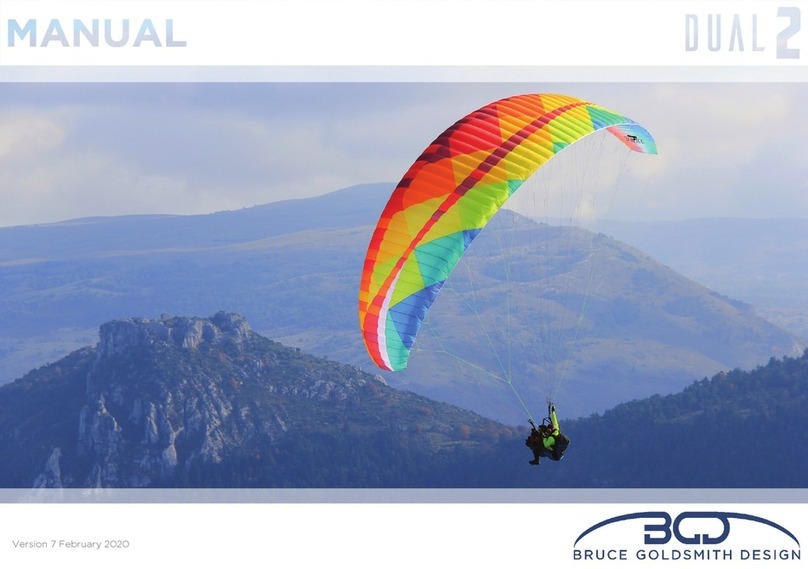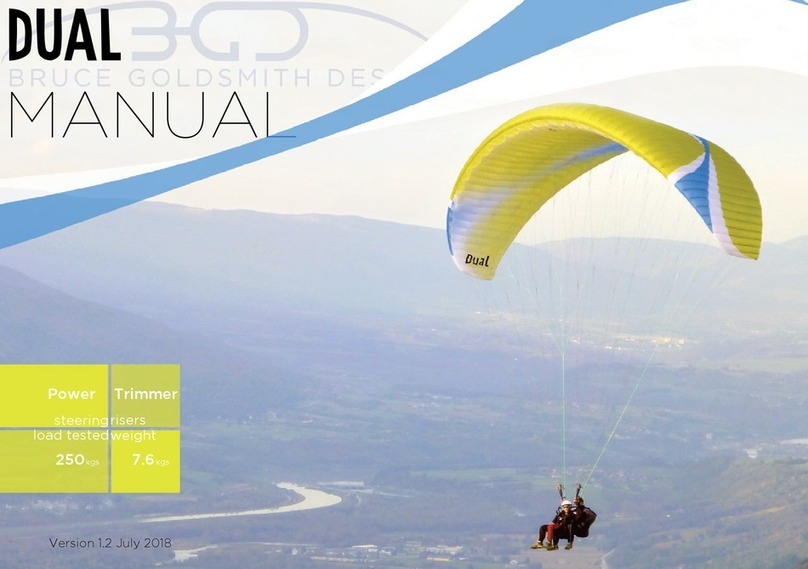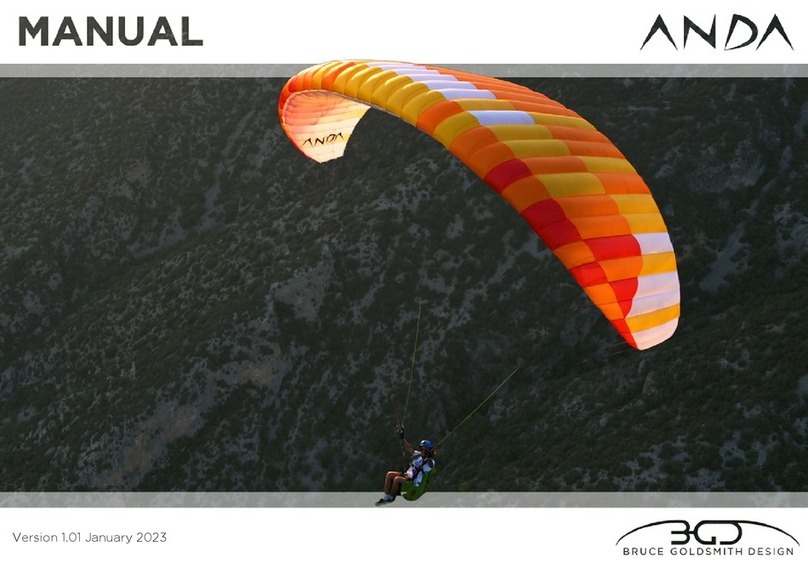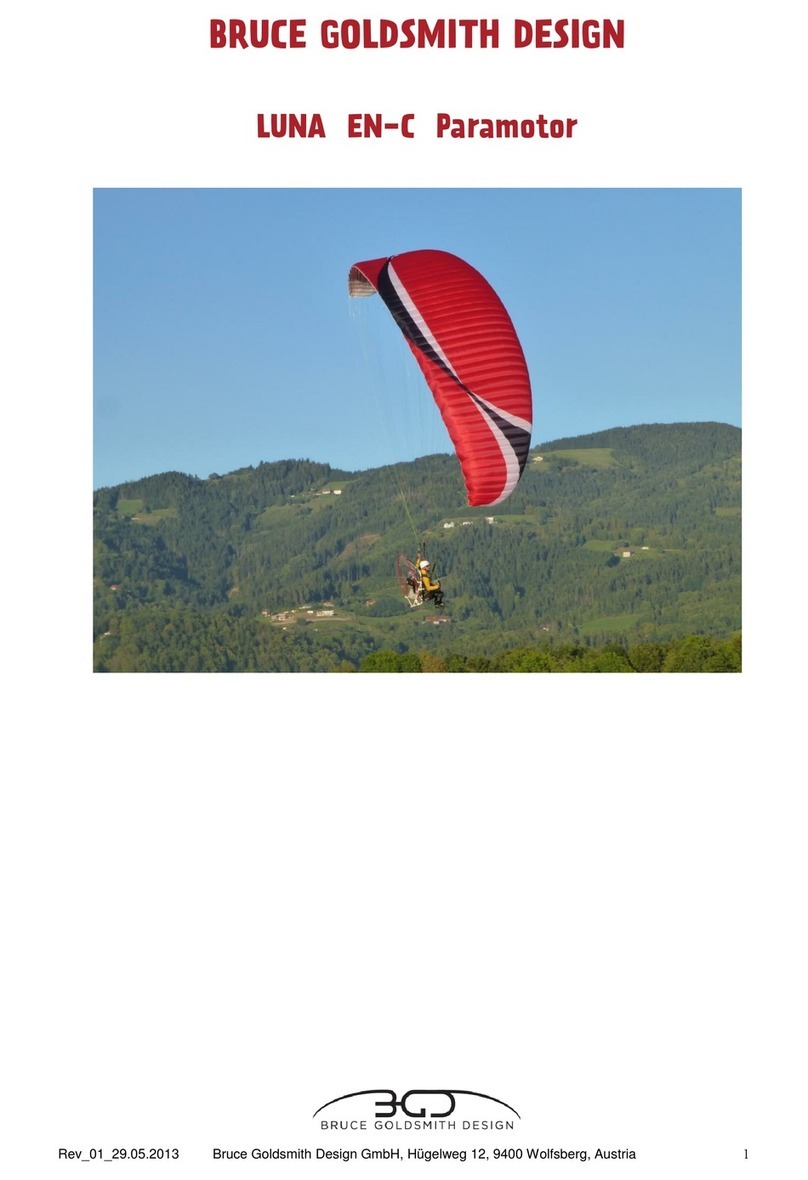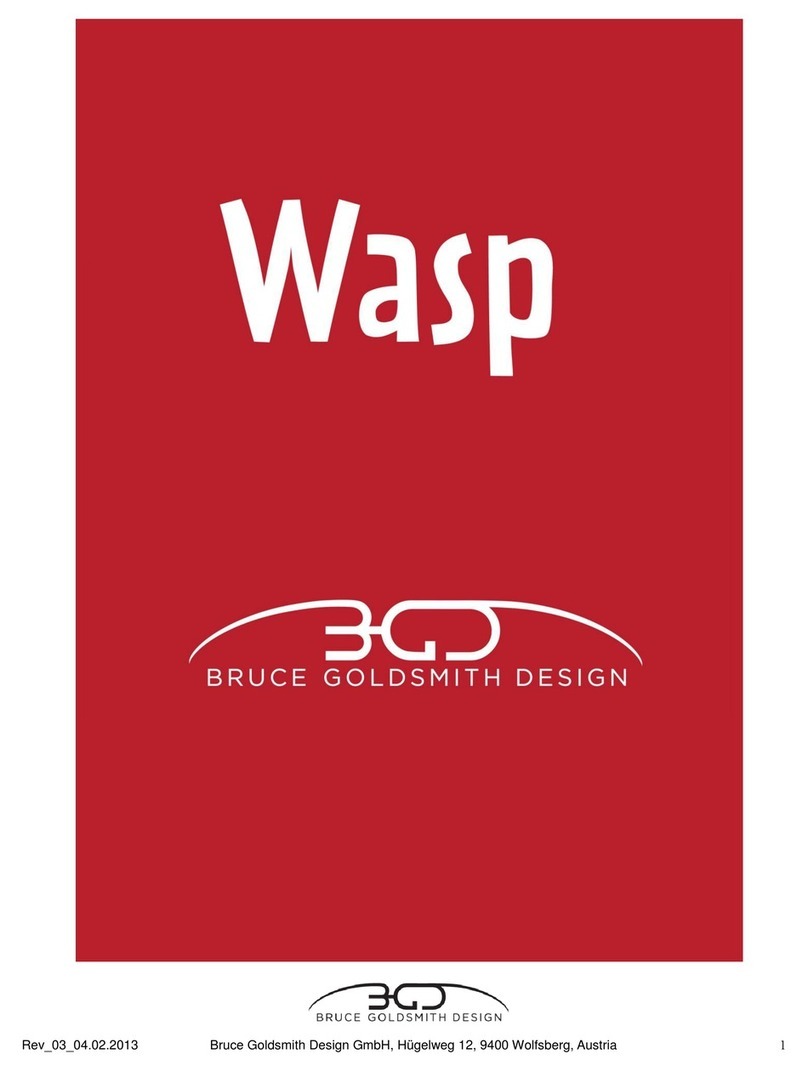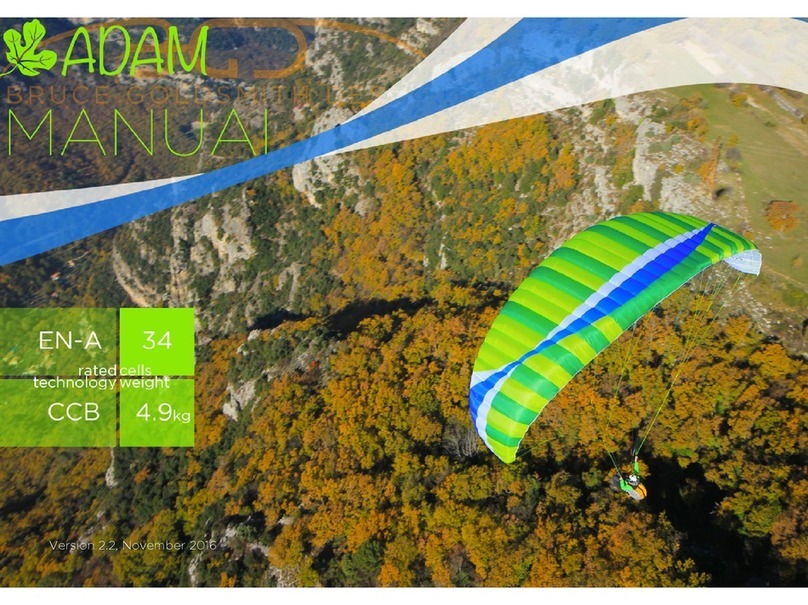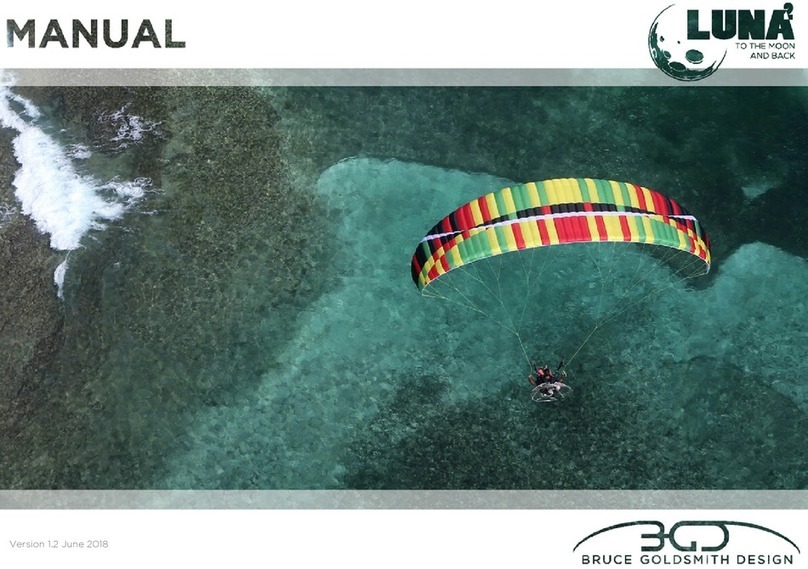
3
LINK PILOT manual EN Version 1.0 January 2021
LINK PILOT Owner’s Manual
Tandem Pilot Harness | EN1651 and LTF 91/09
Welcome to Bruce Goldsmith Design
Thank you for choosing a BGD product. We love ying and our goal is to make paragliding equipment that others will
enjoy as much as we do. We build products with personality, exceptional equipment with the rened handling and
innovative qualities that Bruce Goldsmith Design are renowned for.
Introduction
The LINK PILOT is a lightweight and comfortable split-leg harness for tandem pilots. It provides an elevated seating
position behind the passenger. The inbuilt reserve container has a 210cm webbing bridle, and the reserve handle can be
positioned on either the right or left side. There are interchangeable and removable underseat protectors – an airbag
and a foam version – which attach to the base of the harness using Velcro straps. The protectors are very quick and
easy to attach and remove. The harness is only certied with one of the certied protectors in place.
The LINK PILOT is a tandem harness for non-motorised paragliding. It should not be used for skydiving, Base jumping
etc. It is suitable for towing if a certied tandem towing release is used. There are no separate attachment points to
mount a towing release. Before mounting a towing release, please check the towing release manual.
Please read this manual before using the harness. Paragliding is a potentially dangerous sport that can cause serious
injury and even death. The use of BGD equipment is undertaken with the full knowledge that paragliding involves
risks. Inappropriate use of your equipment will increase these risks. The pilot takes exclusive responsibility for all
risks associated with the use of this equipment. Any kind of physical modication to the harness will invalidate the
certication.
Welcome
